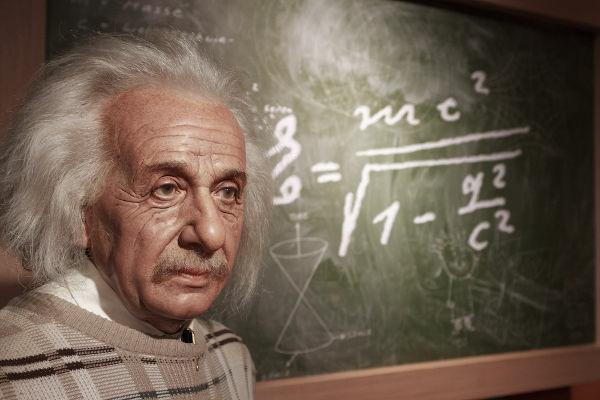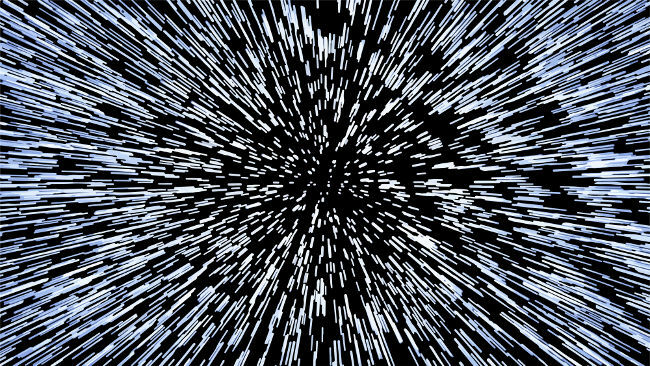time dilation is the difference in measure of timefor two identical watches and perfectly synchronized that arises when one of these clocks is moving at a speed comparable to speed of light or even when it is subject to a gravitational field different from what is found in the other clock. The phenomenon of temporal dilation was predicted and explained theoretically by the German physicist Albert Einsteininoin the year 1905.
See too:Temporal dilation and the twin paradox
What is time dilation and how does it occur?
Time dilation is understood as a lagnothe measure of a time interval between two referentials whose clocks were previously synchronized. This desynchronization can occur in two different situations. The first one is if one of the reference frames moves at a speed close to the speed of light, that is, about 300 thousand kilometers per second. The second can occur when one of the references is in a region of gravitational potential different than the first one.

In practice, the temporal dilation causes the clock hands"turn more slowly", as if the conventional duration of the second or the minute, for example, were slightly increased. Furthermore, the temporal dilation produced by a high speed is reciprocal for the two references, that is, when one looks at the other, both will notice a slower passage of time.
This no longer happens with the temporal dilation caused by differenceinfieldgravitational, since, in this case, only the body subject to a different gravitational field is subject to time dilation. This type of dilation is explained by a generalization of the special theory of relativity, known as theory of general relativity.
Lookalso: Why can't even light escape black holes?
Do not stop now... There's more after the advertising ;)
Experiments and evidence of time dilation
The time dilation, foreseen by the Theory of relativity of Einstein, has already been observed and measured in a large number of experiments. It can be seen in:
particle accelerators;
atomic clocks;
satellites;
cosmic rays, energetic particles that enter the Earth's atmosphere from all directions in the Universe.
In one of these experiments, the presence of a particle known as pi meson, at heights close to the surface of the Earth. These particles are produced when a cosmic ray collides with some atom in the atmosphere, disintegrating it into a wide variety of smaller particles.
Since the time of half life of the pi meson is very short, it should not be possible to observe it at sea height, for example, but only where it forms – several kilometers high. What happens in this case is that the speed at which these pions move, right after the collision that they create, is so large that, relative to Earth, the length of their half-life extends considerably. In this way, it is possible to detect them at low altitudes. The discovery of the pi meson by Brazilian physicist César Lattes served as an excellent proofexperimentalgivesdilationoftime.
In another experiment, two synchronized atomic clocks were placed at different heights (one was 33 centimeters above the other) and measured breaksintimelightlymany different, since the clock that was lower experienced a more intense gravity. However, it should be noted that the effect of such temporal dilation is so low that the lag between these clocks was only 90 billionths of a second in 80 years of measurement.
In a variation on this experiment, physicists set one of the clocks to oscillate at a speed of 10 m/s. With this, they were also able to measure a difference in measured time between the two clocks. Based on these experiments, today we know that, when climbing the steps of a ladder or still riding in a car, even at low speeds, the time passes differently for all of us.
See too:Sirius – one of the most modern particle accelerators in the world is Brazilian
Calculation of time dilation
The calculation of dilationtemporal is made based on transformationsinLorentz. These transformations are nothing more than a set of equations that relate the time intervals in which an event takes place in two distinct references.
See below the formula that is used to calculate time dilation due to velocity.

t0 – time measured by the observer at rest (own time)
t – time measured by the moving observer
v – speed of the moving observer
ç - speed of light
The formula above can also be written in a simpler way. For that, we say that the time measured by the moving observer is equal to the eigentime multiplied by a relativistic correction factor, known as the Lorentz factor.

Let's make a example with the formula shown above.
Suppose two atomic clocks are perfectly synchronized and one of them is set to move at a speed of 0.6c (where c is the speed of light in a vacuum). If 10 s have passed by the clock at rest, how many seconds will have passed by the clock moving at high speed?
Let's calculate the Lorentz factor with the information provided. Watch:

Finally, to obtain the time measured by the moving reference frame, we must multiply the eigentime by the Lorentz correction factor.

Based on the calculation, we found that if one of the clocks moved at a speed equal to 60% of the speed of light (0.6c), a 10 s event would have its duration extended to 12.5 s. However, it is noteworthy that we would only notice time dilation if we observed the event from the reference frame at rest and vice versa.
By Rafael Hellerbrock
Physics teacher
Would you like to reference this text in a school or academic work? Look:
HELERBROCK, Rafael. "Time dilation"; Brazil School. Available in: https://brasilescola.uol.com.br/fisica/dilatacao-tempo.htm. Accessed on June 27, 2021.
Physics

How about knowing more about the Theory of General Relativity? This theory, proposed by Einstein, is a generalization of the Theory of Restricted Relativity and takes into account non-inertial references, that is, those that present acceleration. With this theory, Einstein showed that large masses are capable of deforming space, bending it.
Physics

Do you know what the speed of light is? In a vacuum, light can travel at a speed of 299,792,458 meters per second. To this day, nothing is known to be able to move faster than her. The speed of light does not depend on its emitting source, nor on its observers, but exclusively on the medium in which it propagates.



